
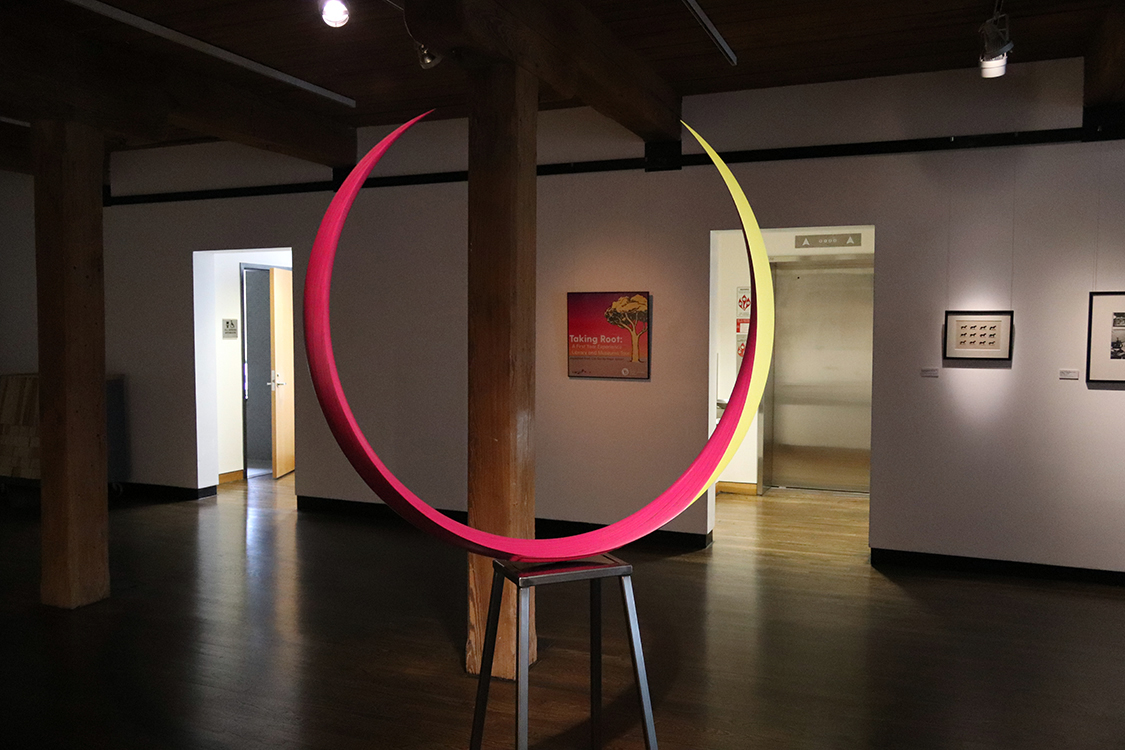
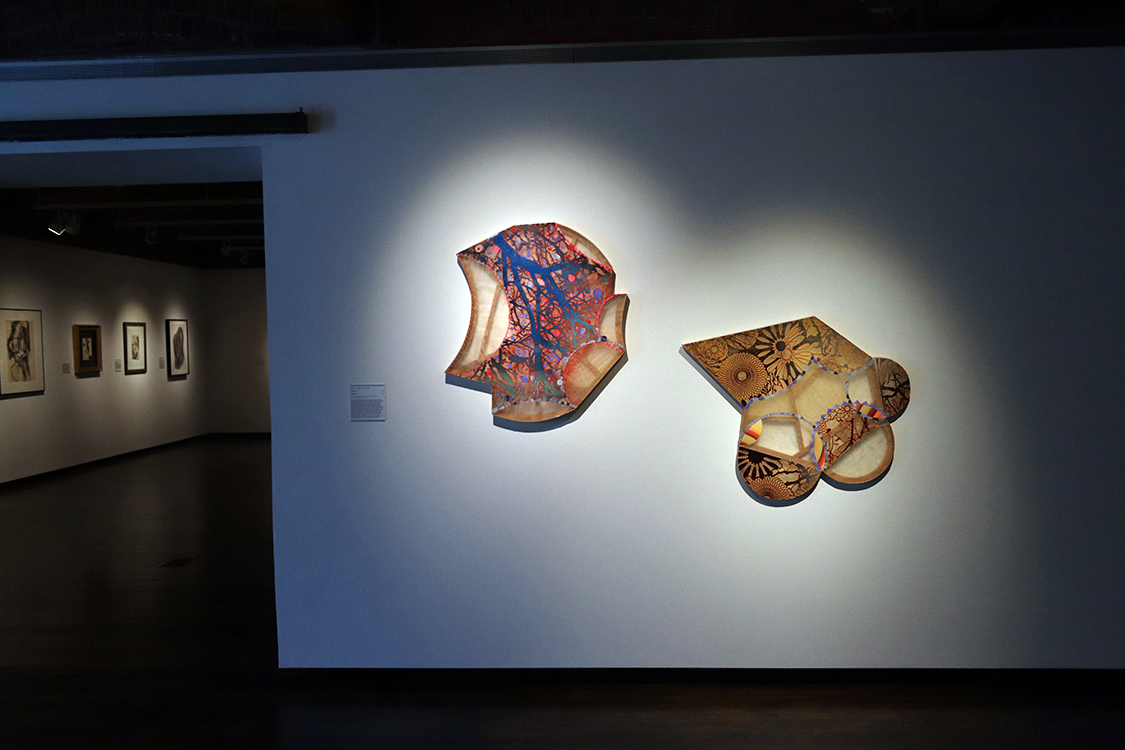
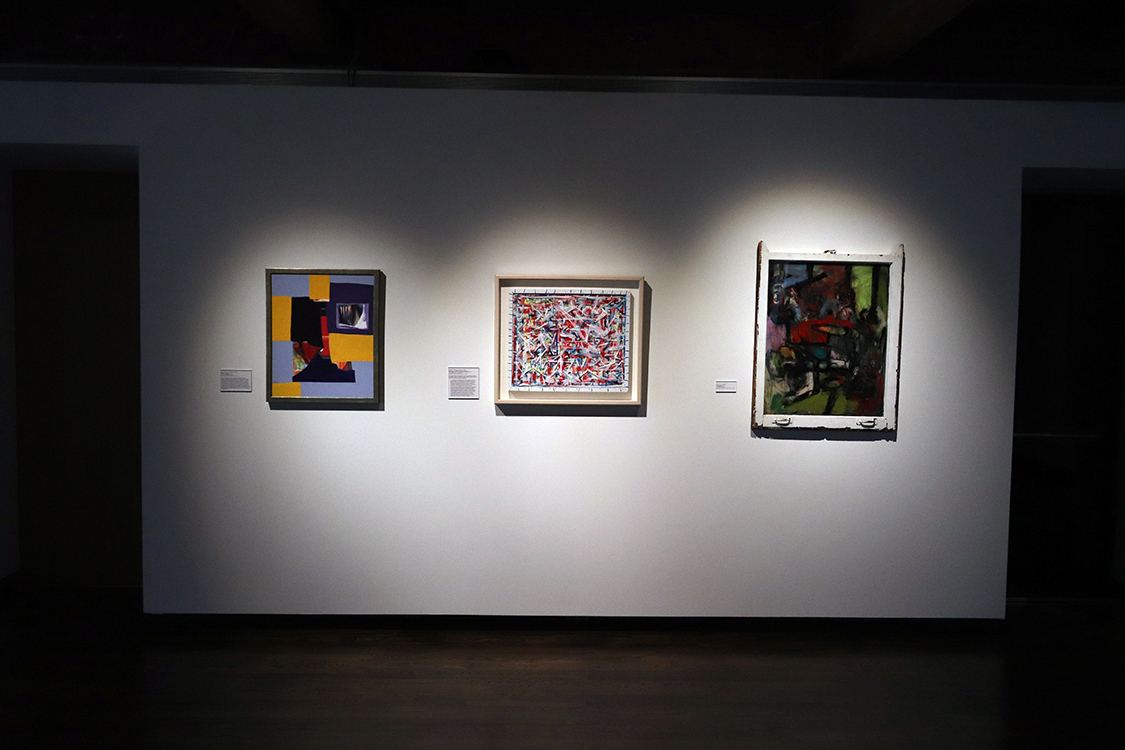
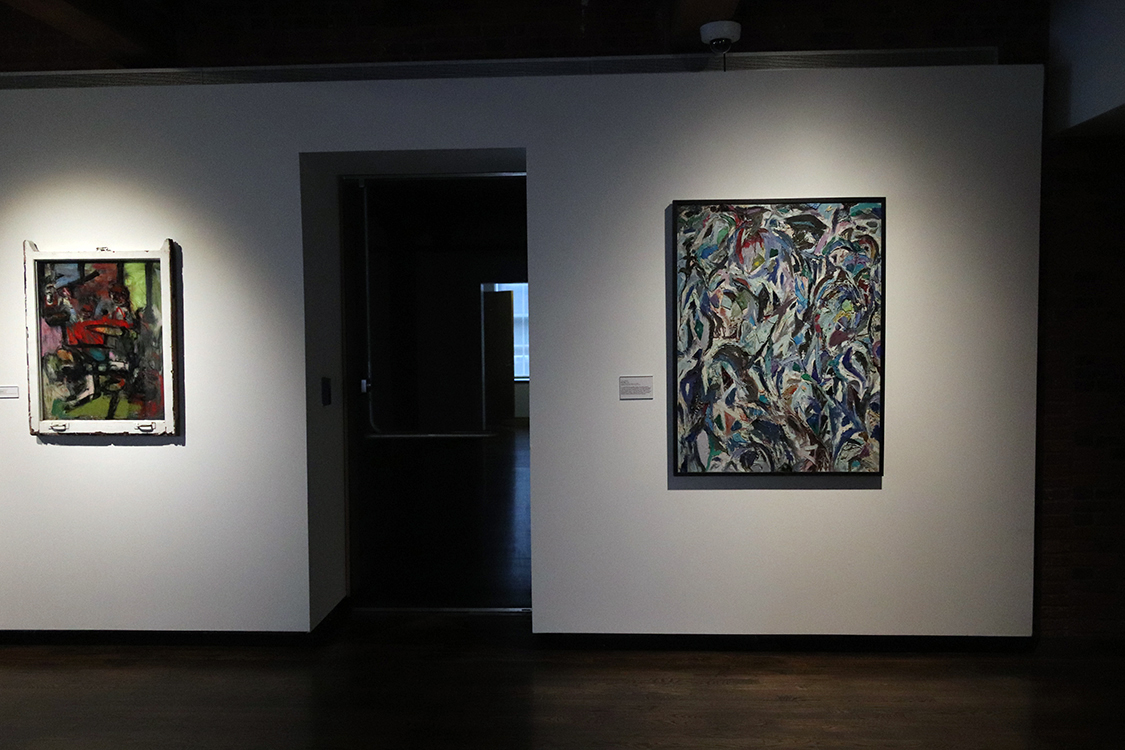
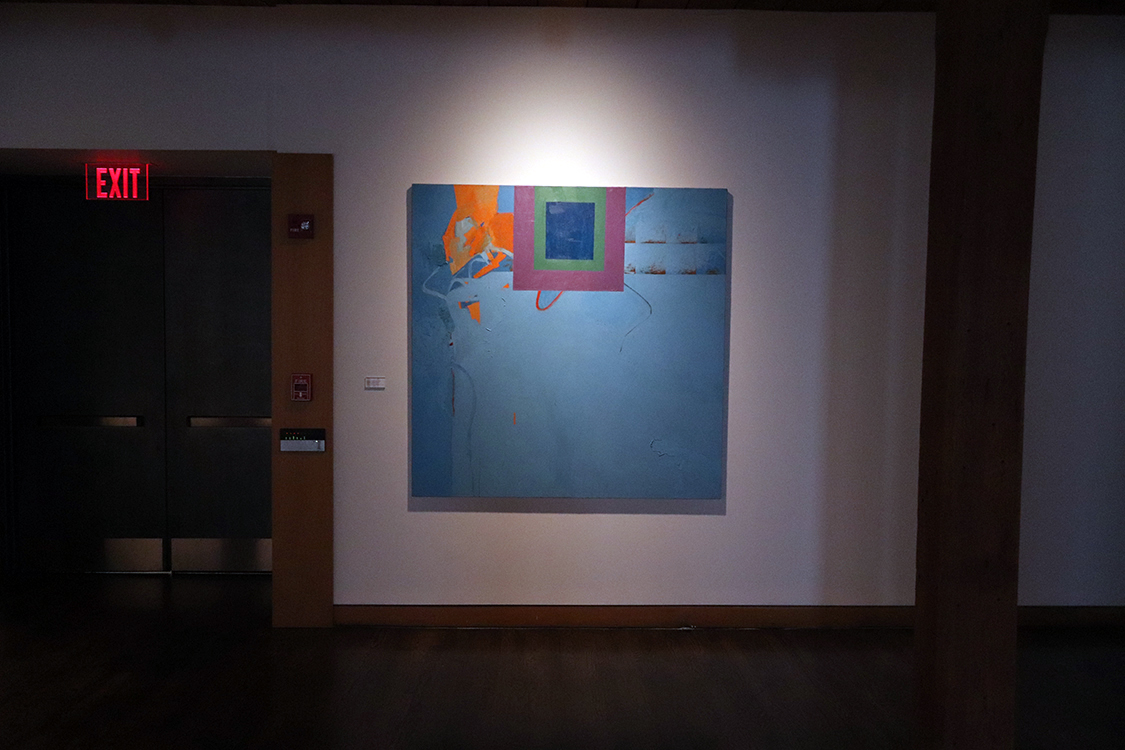
1.
Dennis Beach (American, b. 1956)
Curl #3
2016
plywood, acrylic, pigmented epoxy, stainless steel
Museums Collections, Purchase Made Possible by the Support of Anonymous Donors
Vibrant, even fluorescent colors play a key role in the perception of Beach’s constructions. Here, the two dominant colors of yellow and pink increase a sense of dynamism that occurs when moving around the piece whose curves, edges, and form appear to shift from different angles and vantage points. Beach introduces an additional element of color – in this case fine lines of black – at various points throughout the thin layers of plywood and epoxy used to create the curl shape.
Beach earned his M.F.A. from University of Delaware in 2005.
2.
Robert Straight (American, b.1946)
P-490, 2012 left
P-489, 2012 right
acrylic, cheese cloth, tulle, burlap, laser cut paper, wood
Courtesy of Schmidt-Dean Gallery
These elaborate structures involve wooden stretchers that form compelling geometric shapes on the wall. The process of producing the imagery and surface texture seen in each was multifaceted. Straight utilized laser cutters to create painted paper collaged elements and used materials like tulle and cheesecloth to allow for transparent passages in both works. Each piece also features imagery of branches from a crab apple tree, while P-489 to the right also includes delicate spiral designs made with a spirograph. The lines formed by the wooden stretchers visible through the surfaces impact the compositions on the surfaces of both works while creating an intriguing sense of depth and three-dimensionality. Straight has stated that some of his main sources of inspiration include math, science, investigation of pattern and process.
Straight is a Professor Emeritus at University of Delaware, having joined the Department of Art and Design faculty in 1980.
3.
Lionel Lofton (American, b. 1954)
Yellow Stage
2001
acrylic and collage on paper
Museums Collections, Gift of Paul R. Jones
Lofton has explained that he engages with ideas of inner strength, spirituality, and beauty in his art. Formally, Yellow Stage shifts dramatically in approach and tone in different areas of the composition. Wide flat areas of pale blue, purple, and purple’s complimentary color, yellow, vibrate with optical intensity along with the bright reds at the center of the composition. These flat passages give way to smaller sections of gestural mark-making in a range of colors at lower left. The rectangle at upper right creates the impression of a picture within a picture. Lofton is well-known for experimenting with mixed media. Here he includes small passages of collaged text.
4.
Floyd Coleman (American, b. 1939)
Homage to FYB: Improvisation
1997
acrylic, plexi-glass, and glass
Museums Collections, Gift of Paul R. Jones
This vividly colored composition is part of a series that Coleman considered a return to abstraction after exploring other avenues in art. In comments from 2008 he explained:
“… Homage to FYB: Improvisation is one where I returned to abstraction. (It is
dedicated to my wife Floretta Yvonne Boyd). I did a series of works like this
where I would begin the piece using paper and then plexi-glass painted on
both sides of the glass, constructing a type of image that is reminiscent of
the pieces done in the early 1960s.
In this piece, the white lines and shapes push the reds and other warm
colors back because the whites are painted on a pane of glass that is
placed atop of a previously painted piece of plexi-glass. The intense reds
and yellows provide edginess, a tension, which gives the piece vitality and
expressive power, reminiscent of John Coltrane’s and Ornette Coleman’s
jazz compositions. An all over type composition with only slight moments
of quietude, achieved by an absence of color or markings.”
5.
Robert Johnson
Untitled
2003
oil, glass and wood
Museums Collections, Gift of Paul R. Jones
6.
Larry Miller
On Two
1988
oil, glass and mixed media on canvas
Museums Collections, Gift of Paul R. Jones
The spare title of this painting, On Two, may evoke a range of associations. Among other possibilities, it can suggest the idea of a musician spurring the beginning of a song or the collaborative efforts of people lifting something heavy. This weighty canvas featuring thick impasto is a spectacle of swirling paint punctuated by painted shards of glass adhered to the surface. It is a sensory pleasure to become absorbed in the play of materials.
7.
Alvin Smith (American, b. 1933)
Untitled (Series 7)
1985
acrylic on canvas
Museums Collections, Gift of Paul R. Jones

